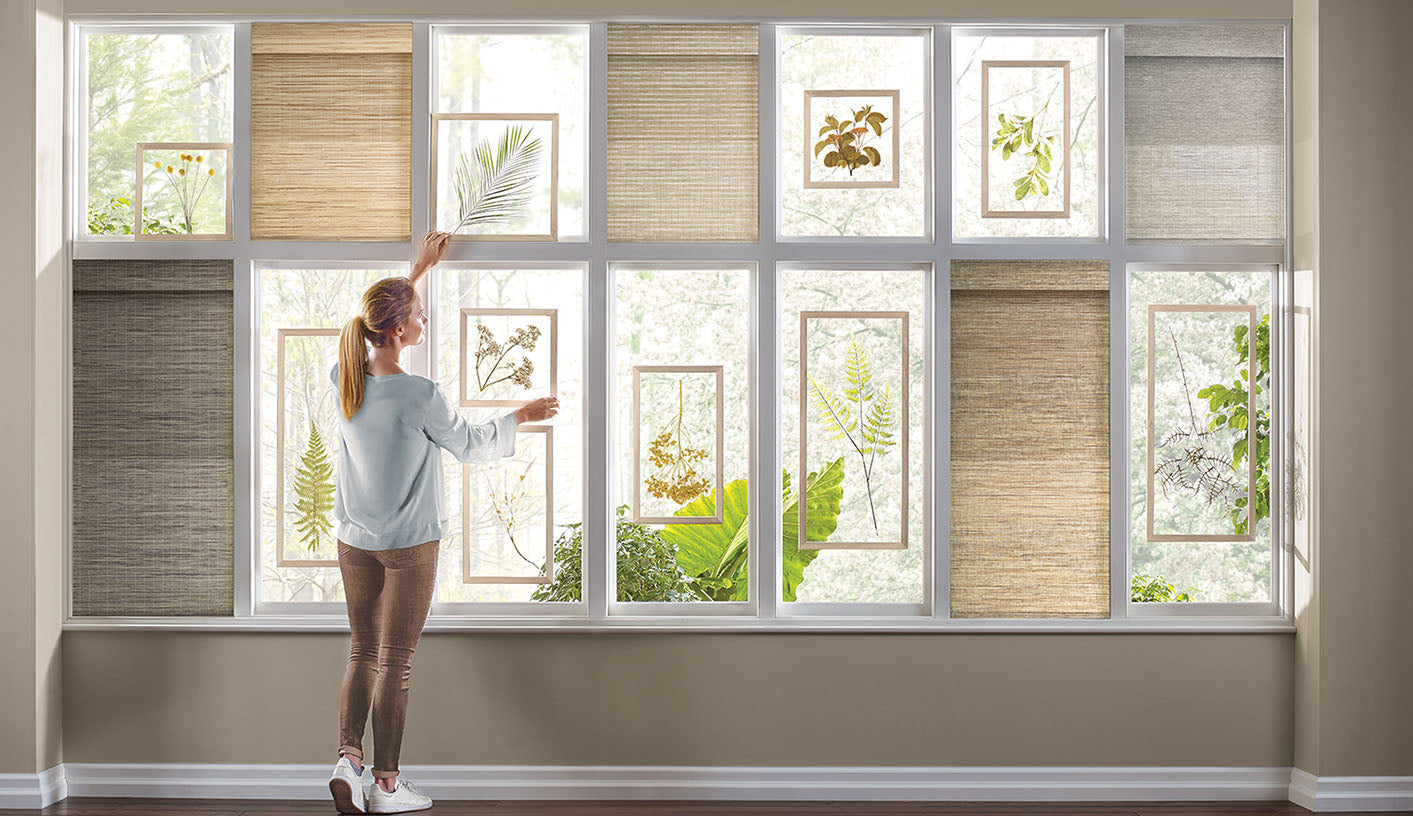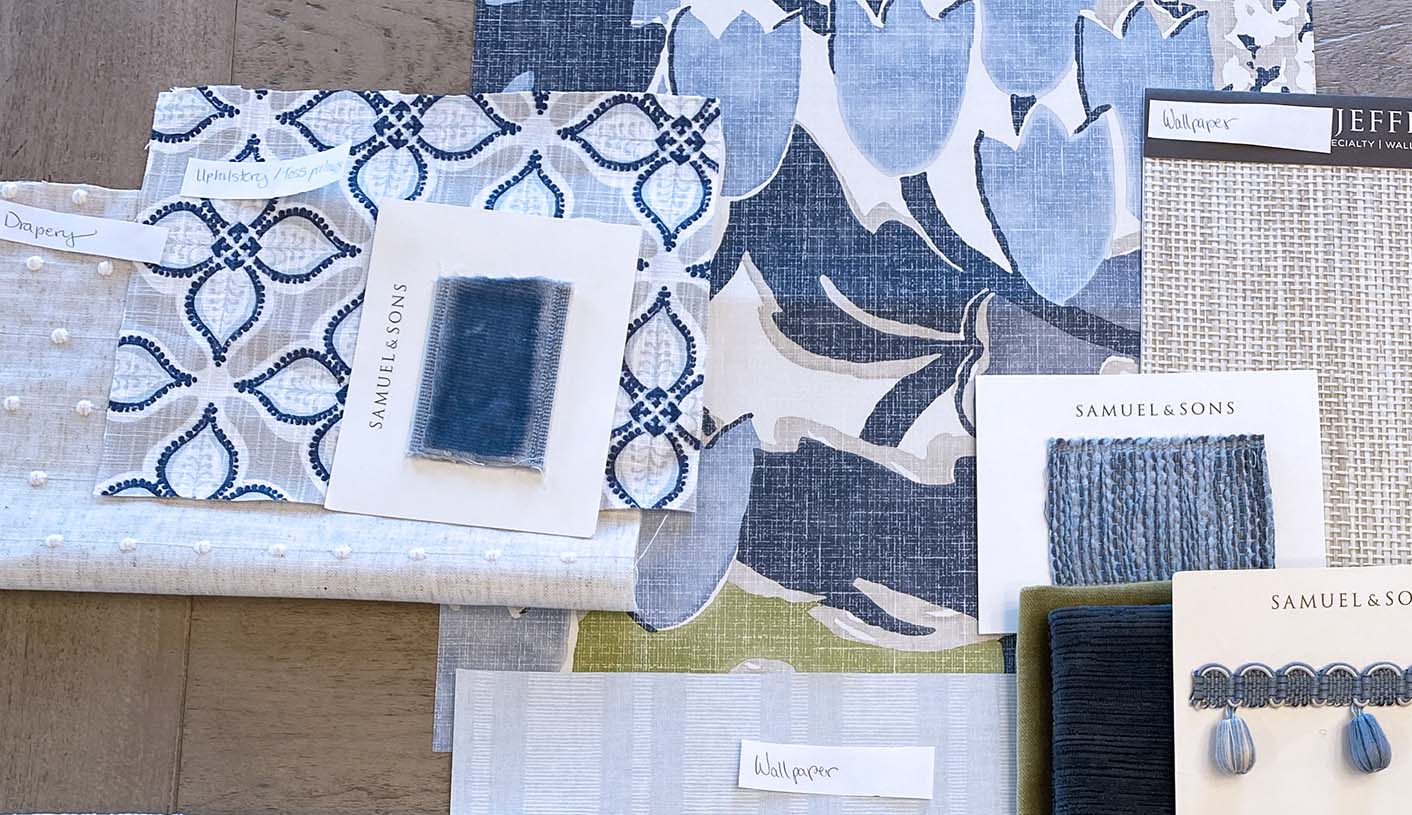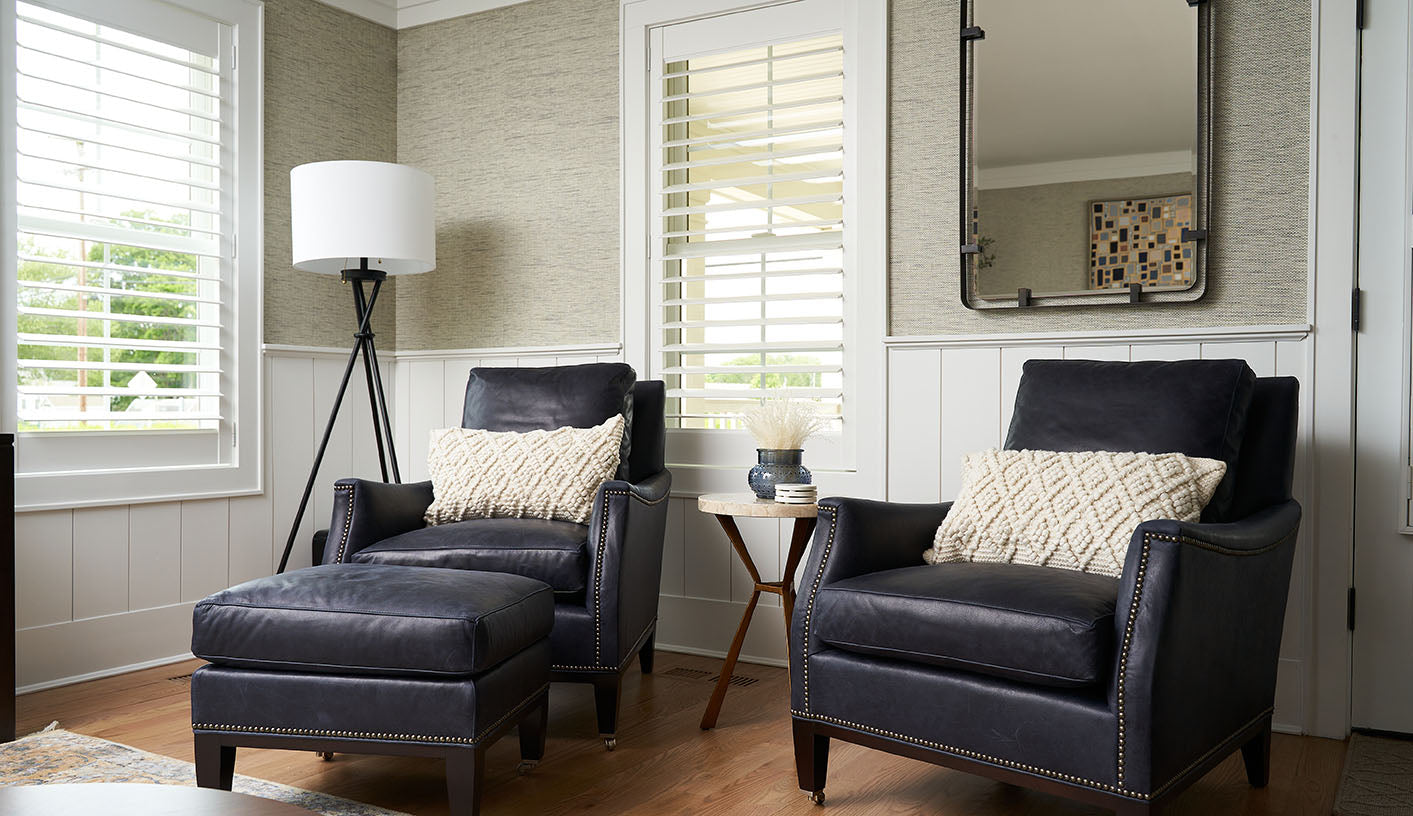Commonly an afterthought (or overlooked altogether) window treatments are a great way to set the tone for a room design. They’re also practical, giving you a way to control the light, heat and privacy for each space in your home. But, for all the beauty and practicality of window treatments, the process of selecting the appropriate type can be challenging and downright overwhelming given the wide array of available styles and materials.
At Saybrook Home, we have design professionals fully versed in window treatments and installation ready to guide you through the process. From inspiration to installation, we will help you create the perfect look for your home!
If you’re new to the world of window treatments, here are some basic principles to get you started in dressing your windows the Saybrook Home way.
STYLES
When selecting window treatments, consider the mood you want to create in the room. Window treatments range from classic, traditional pleated drapes to contemporary blinds and shades, making them a obtainable way to transform a room and add personality. The way a window is covered – or not – helps establish the design tone. Full-length drapes made from cotton and linen fabrics provide a light, airy feel. Roman shades can infuse a contemporary flair, especially when they boast a bold embroidered pattern. Wood blinds and natural woven shades topped with valances create a polished backdrop.
So, you first want to consider the overall aesthetic you’re aiming to achieve before going down one road or another with your options.
Curtains & Drapes
Versatile curtains and drapes are classic treatments that work in both casual and formal rooms. Rod-pocket drape panels hang from a rod inserted through the channel at the top of the curtain. The combination of lush fabric with a substantial rod looks elegant in a formal room, while lightweight fabric softens the space it’s in. The design works with rings and rods or a traversing rod system - each offering a different take on the overall look. Blackout fabric on the back of a panel helps block light in bedrooms and provides privacy. Drapes can be lined with room darkening or blackout lining or left unlined.
Valances & Cornices
Short and sweet, valances and cornices add decorative interest to any window but work especially well as kitchen window treatments. Simple valances made from cotton fabric and a basic rod bring a burst of color to casual rooms, while tailored valances with crisp pleats add style to a formal room. Cornices are valances made from wood, covered with fabric and often have decorative trim. Both valances and cornices pair well with sheers, curtains or shades for privacy. Cornices can be conveniently used to hide hardware as well.
Shades
Simple and elegant, shades cover windows from top to bottom when closed to provide privacy and color. When used with curtains, valances or cornices, shades blend form and function in both casual and formal rooms.
Roman shades bring a tailored look into the room and are an excellent way to add color and texture in traditional, bold and contemporary spaces. A closed roman shade lies flat against the window, showing off the pattern of the fabric and a pop of color. As it’s opened, the shade fabric stacks evenly, creating a billow effect at the top of a window. Top a roman shade off with some fun trim and you’ve got yourself a polished yet playful look. Window roller shades roll up at the top with the pull of a cord or a corded lift system and give the window a clean, modern appearance that blends well with almost any design style, depending on the fabric you select.

Sheers
Sheers are airy and allow plenty of light through, making them ideal for rooms where you want softened sunlight. These fabrics provide limited privacy and work best in kitchens or in combination with heavier fabrics or shades. Layer the sheers with another drapery panel for a multifunctional look.
Blinds
Blinds are crafted with slats of wood or other material, and are classic window treatments that provide excellent control of privacy and light levels in the room. Wood blinds – and faux wood – bring an organic feel to the room, while metal blinds add an industrial touch. Regardless of the blind type, pair with drapes and valances to add color and sophistication.

MATERIALS
Choosing the best fabric for window treatments is important; the weight and texture of the fabric affect the amount of light that shines through and how well it holds up to sun exposure. Linen, canvas and damask are durable fabrics that drape luxuriously. Printed cotton and lighter weight embroidered fabrics work well in casual rooms, while silk and velvet fit in with formal spaces.
FUNCTIONALITY
Window treatments also meet practical needs, especially when combined. Curtains or shades lined with blackout fabric fully block light from the outside, making them an ideal way to create a cozy bedroom. Shades pulled down and paired with drapes or curtains block all angles of the windows to provide maximum privacy at night. Sheers allow plenty of light into a room, reducing the need for lamps during the day and making them a sound option for living rooms, family rooms and patios.

Measurement and Size Considerations
Shades, valances, blinds can hang inside or outside your interior window frames, depending on the look you prefer. Positioning them inside the window frame creates a uniform look, but placing them on the outside of the window by mounting their hardware to the wall hides the frame. Drapery panels are most often hung outside the window frame to make the window appear larger and allow light to come in when open.
Some window treatments – like blinds, shades, sheers and valances – are commonly mounted both inside or outside window frames. Other treatments – like curtains, drapes and cornices – are most often mounted on the wall around the window frame, with 1–3 inches on each side between the hardware and the frame. To size an inside-mounted treatment, measure the distance between the sides of the window casing where you plan to place the hardware to hold the treatment in place. Knowing the vertical distance of the casing also helps you determine the length for the blinds or shade.

For outside-mounted window treatments, note the length and width of the window frame. Measure the distance between the top of the window and ceiling and the distance between the bottom of the window and the floor. If the room has multiple windows in a row, write down the distances between the windows. These measurements are important when choosing the width and length of the window treatment and the hardware placement.
WINDOW HARDWARE
Window hardware - from curtain rods to tiebacks – puts the finishing touch on your window treatments and create your desired look. When it comes to materials and colors, bright brass adds a touch of elegance to a traditional room; brushed aluminum, nickel and stainless-steel look sleek and modern; and wood tones and painted finishes add warmth.
Curtain Rods
Used with curtains and drapery panels, curtain rods suspend fabric over the window. Substantial rods with wide diameters are dramatic and create a focal point in the room, while narrow cafe rods are well-suited for kitchens and bathrooms with lightweight curtains. When choosing an adjustable rod, pick one wide enough that you don’t have to fully extend it to span the window. This provides extra support for the rod and reduces sagging where the rods join in the middle. French return rods create a contemporary look and help combat light bleed.
Double curtain rods feature two sets of rods to frame the window. The inner rod, designed to hold sheer or lace fabric, is usually smaller in diameter than the outer rod. This type of rod makes it possible to hang two different types of curtains at the same time. To let in some light but maintain privacy, open the outer curtains and leave the sheers in place.
Little Extras
Finials are ornamental pieces added to the ends of curtain rods. Commonly made from wood, metal or glass, finials add a decorative touch to the window treatment.
Tiebacks and tassels make it possible to open curtains without sliding them along the curtain rod. They range from hooks or knobs attached to the wall near the window to tassels and pieces of fabric that tie directly around the drapery panels. Stationary binds or knobs can have a vintage or contemporary style, and fabric tiebacks often have a traditional look.
Clip rings attach directly to the tops of curtain panels through hooks or clips that slide over a curtain rod. These work well in formal and casual rooms and are easy to use because the curtains slide over the rod to open.
The right window treatments and hardware can absolutely transform a room and set a mood for the space. To create your desired look, it helps to know about different styles of window treatments and the effects they have on different spaces. Hopefully this guide was a helpful starting point.
Fortunately, at Saybrook Home, you don’t need to worry about navigating the world of window treatments on your own. Our designers are always available to help you create the perfect look that marries form and function for your home. To reserve time with one of our design professionals, or to schedule an in-home consultation, click here.




2 comments
Leave a comment
This site is protected by hCaptcha and the hCaptcha Privacy Policy and Terms of Service apply.